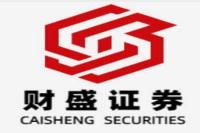A Deep Dive into the ETF Market: Unpacking the Recent $4 Billion Outflow
Meta Description: Unraveling the recent ETF market trends, including significant outflows, top-performing sectors (like the booming semiconductor industry), and the impact of policy changes. Discover expert insights and analysis on ETF investment strategies.
Whoa, Nelly! The ETF (Exchange-Traded Fund) world has been a whirlwind lately, hasn't it? This week alone witnessed a staggering ~$4 billion net outflow from both domestic and cross-border equity ETFs in the Shanghai and Shenzhen stock exchanges. That’s a LOT of money moving! But before you panic and sell everything, let's dig deeper. This isn't just a random market fluctuation; it's a complex dance of policy shifts, investor sentiment, and sector-specific performance. We'll break down the key trends, explore the winning and losing sectors, and provide you with the insights you need to navigate this dynamic market. Forget dry, boring financial reports; we’re serving up a juicy, insightful analysis that’s as relevant as it is readable. Prepare to be amazed by the intricate workings of the ETF market and discover how to potentially capitalize on this ever-changing landscape. This isn't just about numbers; it's about understanding the why behind the what, and empowering you to make informed investment decisions. So buckle up, because we're about to embark on a thrilling journey into the heart of the ETF world!
ETF Market Analysis: A Week of Volatility and Shifts
This past week saw a significant shake-up in the ETF market. While the major indices – the Shanghai Composite Index (up 1.36%) and the Shenzhen Component Index (up 2.95%) – showed overall strength, the underlying ETF activity painted a different picture. The total trading volume reached a massive ¥8.24 trillion (approximately $1.1 trillion USD), with Shanghai accounting for ¥3.24 trillion and Shenzhen for ¥5.72 trillion. Despite this high volume, the overall net outflow of ~¥400 billion (~$4 billion USD) from equity and cross-border ETFs is noteworthy. This signals a complex interplay of factors affecting investor behavior. It's not necessarily a sign of impending doom, but it definitely warrants a closer look.
Key ETF Performances:
Let's look at some specific ETF performances:
| ETF | Net Change (in Billion Shares) | Net Outflow (in Billions of Yuan) |
|-----------------|-------------------------------|-----------------------------------|
| CSI 300 ETF | -25.11 | -98.7 |
| SSE 50 ETF | -10.85 | N/A |
| ChiNext ETF | -34.64 | N/A |
| SZSE 500 ETF | -6.12 | N/A |
| K50 ETF | -0.59 | N/A |
(N/A denotes data not readily available in the source material. Further research might reveal more detailed figures.)
This table demonstrates that while the market indices rose, significant capital flowed out of some major index ETFs, suggesting a cautious approach by some investors, despite the positive market sentiment. This highlights the importance of analyzing individual ETF performance, rather than relying solely on overall market indices.
Sector-Specific Trends: Winners and Losers
The story doesn't end with overall outflows. A closer examination reveals sector-specific trends. While the overall market showed strength, capital allocation showed a clear preference for certain sectors over others.
The High-Flyers:
-
Semiconductor and Chip ETFs: These ETFs saw substantial net inflows, with one particular 科创芯片 ETF (Kechuang Chip ETF) experiencing a near ¥30 billion inflow. This reflects the ongoing importance and investment potential in the domestic semiconductor industry. The surge in share prices for chip stocks reinforced this trend. The break through 20 billion shares for the 科创芯片 ETF (588200) on Friday is a testament to this bullish sentiment.
-
Pharmaceutical ETFs: These also experienced notable inflows, indicating continued investor confidence in the healthcare sector.
The Underperformers:
-
Brokerage and Securities ETFs: These ETFs saw significant outflows, possibly reflecting concerns about the short-term outlook for the financial sector. The substantial outflow suggests a degree of risk aversion towards this sector, at least in the short term.
-
Gaming ETFs: These ETFs also experienced substantial outflows, hinting at a potential shift in investor sentiment within the entertainment industry. Regulatory changes or market saturation could be contributing factors.
This divergence in sector performance underscores the importance of diversification and targeted investment strategies. Blindly following index funds may not always be the optimal approach. A deeper understanding of the underlying sectors is essential.
The Impact of Policy Changes on ETF Flows
The recent injection of stimulus and policy support from the Chinese government played a significant role in shaping market sentiment. The measures, characterized as a "combination punch," aimed to revitalize the market, and initial responses suggest they've had a positive impact on investor confidence. The introduction of the Securities, Fund, and Insurance Company Swap Facility (SFISF) is particularly noteworthy. This initiative aims to improve liquidity and facilitate more efficient capital utilization, particularly for non-bank financial institutions. This is generally viewed as a positive development for the market, potentially leading to increased trading activity and improved investor sentiment. However, the observed net outflows despite these policy interventions suggest that it takes time for such measures to fully translate into widespread positive investor behavior. It’s a marathon, not a sprint!
Semiconductor Industry: A Closer Look
The remarkable performance of the semiconductor ETFs deserves a more in-depth analysis. China’s ambition to achieve self-reliance in semiconductor technology is driving considerable investment in this sector. Despite the relatively low level of domestic production of photoresists (a crucial component in semiconductor manufacturing), the nation is actively pursuing technological independence. This drive towards localization, coupled with the global demand for semiconductors, creates a potentially lucrative environment for domestic semiconductor companies. However, investors should remember that the industry is cyclical, and short-term fluctuations are to be expected. Analysts expect the industry to enter a traditional peak season in the second half of the year, fueled by the government's "comprehensive policy package." This combined with the current low point in the long-term industry cycle makes it a compelling area for investors to watch closely.
ETF Trading Volume: A High-Activity Week
The week’s trading volume was exceptionally high, with 12 ETFs exceeding ¥200 billion in trading volume, and a remarkable 4 ETFs surpassing ¥500 billion. The CSI 300 ETF and a Hong Kong Securities ETF led the pack, exceeding ¥570 billion and ¥550 billion respectively. This high trading activity indicates significant investor participation and market dynamism.
New ETF Issuances: A Look Ahead
While no new ETFs listed this week, two are expected to launch next week, tracking the Hang Seng TECH Index and the Shanghai 50 Index. This adds to the excitement, as new ETFs often bring fresh capital into the market. Knowing which sectors new ETFs are focused on provides critical information for investors.
Frequently Asked Questions (FAQs)
Q1: Is the net outflow of ~$4 billion a cause for concern?
A1: While significant, it's not necessarily alarming. It reflects sector-specific shifts and doesn't necessarily indicate a broader market crash. It’s crucial to analyze the underlying factors rather than focusing solely on the headline figure.
Q2: What sectors should investors focus on?
A2: The semiconductor and pharmaceutical sectors showed strong inflows this week, suggesting potential investment opportunities. However, always conduct thorough due diligence before investing.
Q3: How do policy changes affect ETF performance?
A3: Policy changes, such as the introduction of the SFISF, can significantly impact market liquidity and investor sentiment, influencing ETF flows.
Q4: What is the significance of high trading volume?
A4: High trading volume generally reflects increased investor participation and market dynamism.
Q5: Are there any new ETFs launching soon?
A5: Yes, two new ETFs are expected to launch next week, tracking different indices, representing further investment opportunities.
Q6: Should I buy or sell ETFs based on this information?
A6: This analysis offers insights, but it's not financial advice. Before making any investment decisions, conduct your own thorough research and consider consulting a financial advisor.
Conclusion
The ETF market continues to exhibit dynamic behavior, with significant outflows offset by strong inflows in specific sectors. Policy changes and sector-specific trends are key drivers of this volatility. While the overall market showed signs of strength, investors should remain vigilant and focus on understanding the underlying factors influencing ETF performance. Diversification and careful analysis remain crucial for navigating this dynamic market environment. The future remains uncertain, but by paying close attention to market signals and policy developments, investors can better position themselves to capitalize on emerging opportunities. Remember, this isn't just about numbers; it's about understanding the story they tell. Stay informed, stay engaged, and stay ahead of the curve!



